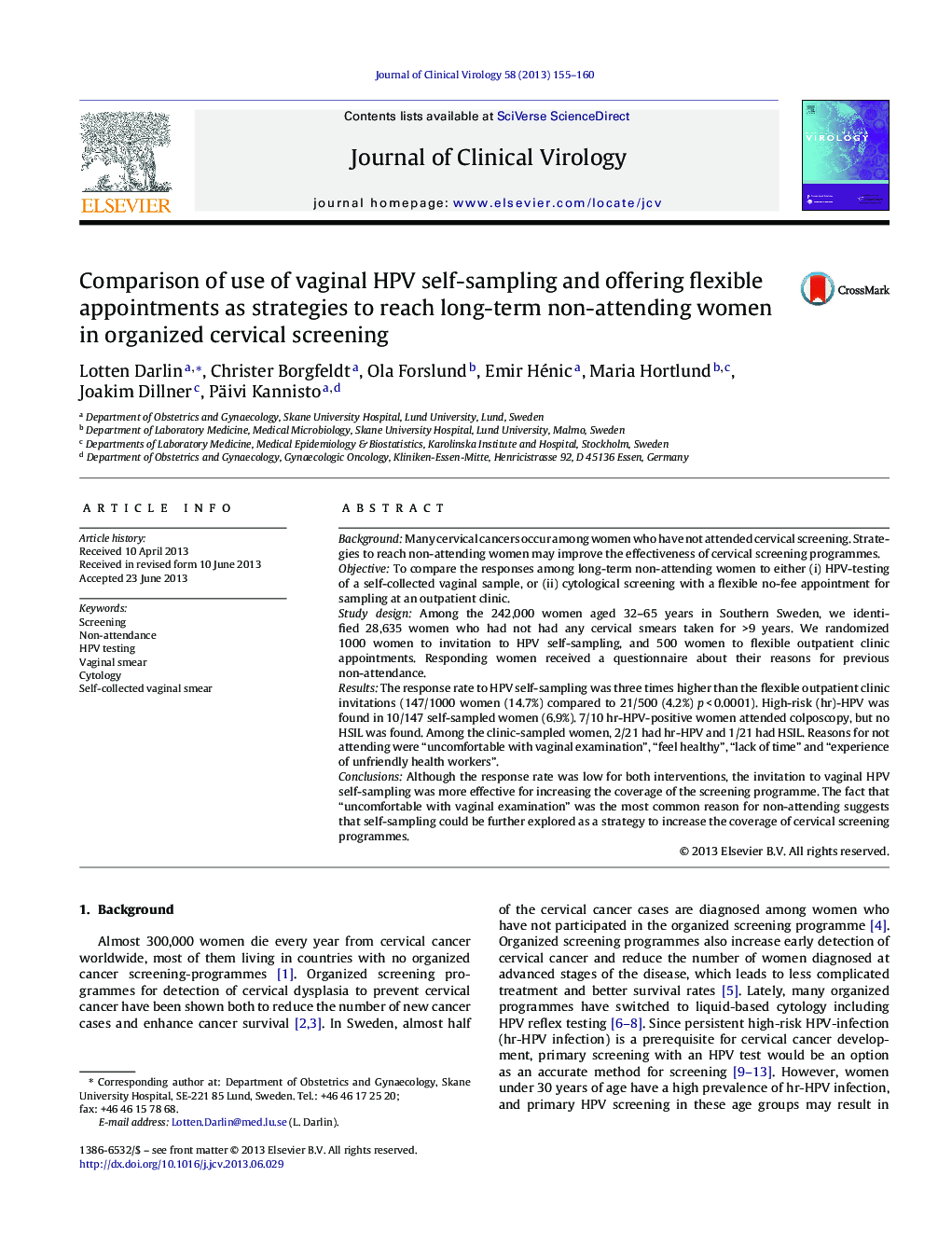| Article ID | Journal | Published Year | Pages | File Type |
|---|---|---|---|---|
| 6121249 | Journal of Clinical Virology | 2013 | 6 Pages |
BackgroundMany cervical cancers occur among women who have not attended cervical screening. Strategies to reach non-attending women may improve the effectiveness of cervical screening programmes.ObjectiveTo compare the responses among long-term non-attending women to either (i) HPV-testing of a self-collected vaginal sample, or (ii) cytological screening with a flexible no-fee appointment for sampling at an outpatient clinic.Study designAmong the 242,000 women aged 32-65 years in Southern Sweden, we identified 28,635 women who had not had any cervical smears taken for >9 years. We randomized 1000 women to invitation to HPV self-sampling, and 500 women to flexible outpatient clinic appointments. Responding women received a questionnaire about their reasons for previous non-attendance.ResultsThe response rate to HPV self-sampling was three times higher than the flexible outpatient clinic invitations (147/1000 women (14.7%) compared to 21/500 (4.2%) p < 0.0001). High-risk (hr)-HPV was found in 10/147 self-sampled women (6.9%). 7/10 hr-HPV-positive women attended colposcopy, but no HSIL was found. Among the clinic-sampled women, 2/21 had hr-HPV and 1/21 had HSIL. Reasons for not attending were “uncomfortable with vaginal examination”, “feel healthy”, “lack of time” and “experience of unfriendly health workers”.ConclusionsAlthough the response rate was low for both interventions, the invitation to vaginal HPV self-sampling was more effective for increasing the coverage of the screening programme. The fact that “uncomfortable with vaginal examination” was the most common reason for non-attending suggests that self-sampling could be further explored as a strategy to increase the coverage of cervical screening programmes.
